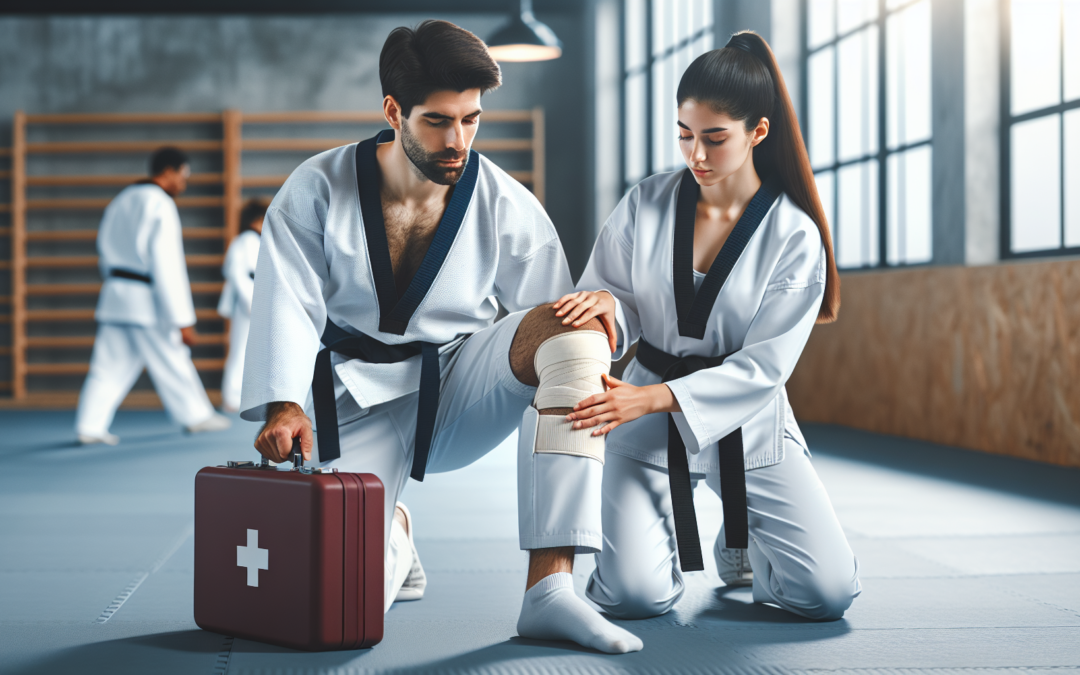“`html
In the spirited journey of Taekwondo, where precision meets power and discipline shapes destiny, common injuries can become unwelcomed chapters in your martial arts story. At Taekwondo Academy, we champion resilience and longevity through enlightened training practices. This guide on common Taekwondo injuries and prevention tips serves as your shield, forging a path away from setbacks and towards triumph. Discover how to protect your body and spirit, ensuring your passion remains a lifelong companion. Read on, and embrace the wisdom that keeps champions on their feet and dreams in motion.
Unveiling the Common Injuries in Taekwondo
Taekwondo, a journey defined by agility, power, and control, brings its practitioners into a realm that demands rigorous training, mental sharpness, and physical endurance. However, the allure of mastery is sometimes marked by injuries that can derail progress and deter passion. In Cherry Hill, New Jersey, where the spirit of martial arts thrives, understanding common Taekwondo injuries and their prevention creates resilient martial artists rooted in safety and excellence.
1. Sprains and Strains: The Unfortunate But Common Occurrence
Decades of experience among Taekwondo practitioners highlight sprains and strains as the bread and butter of common injuries. The dynamic movements typical of Taekwondo—like high kicks, spins, and jumps—stretch muscles and joints, often beyond their optimal limits. Sprains, particularly in the ankles, occur when the ligaments are overstressed, while strains involve the muscles or tendons.
Prevention Tips:
- Warm-Up Thoroughly: Ensure your routine includes dynamic stretches that increase blood flow to muscles and prepare joints for exertion. Pay special attention to the areas most prone to injury, such as calves and hamstrings.
- Consistent Conditioning: Strengthen supporting muscles with weight-bearing exercises and resistance training, promoting more robust muscle support during intense movements.
- Proper Technique and Form: Regularly reassess and correct your form, ensuring that each movement aligns with safe practices. Seeking feedback from a seasoned instructor can prove invaluable.
2. Pulled Muscles: The Performer’s Persistent Setback
Pulled muscles, often seen in the enthusiastic pursuits within Taekwondo sessions, occur when muscles are overstretched or torn. This injury embodies immediate pain and requires diligent attention to prevent prolonged recovery sidelines.
Prevention Tips:
- Progressive Training Intensity: Respect your limits, gradually increasing the intensity of your workouts to give your body time to adapt and fortify.
- Post-Exercise Recovery: Embrace the power of rest days and incorporate flexibility routines such as yoga, ensuring muscular elasticity and lowering injury risks.
- Hydration and Nutrition: Proper nourishment supports rapid muscle recovery, reducing fatigue-induced errors in technique that often lead to pulls.
3. Bruises and Contusions: The Badge of Honor
While bruises might echo the warrior’s spirit, continual contusions can bear risks beyond physical examination in your martial journey. Carved by persistent contacts and impacts, repeated bruising should not be a mark worn with normalcy but rather addressed with strategic prevention.
Prevention Tips:
- Protective Gear: Utilize shin guards, headgear, and body protectors. The right armor minimizes breakforce on your body, keeping uncomfortable impacts at bay.
- Precision Training: Focus on honing precision over power. Greater accuracy reduces unnecessary force and incidental contact, lessening bruise occurrences.
4. Fractures: The Unyielding Barrier to Progress
Engagement in sparring or intense drills may result in fractures—main bones most at risk include the hands, feet, and limbs. Handling or impacting with misplaced force can see cracks in one’s path to mastery.
Prevention Tips:
- Technique Training: Prioritize safety-oriented technique drills that foster correct handling of force vectors and deflection skills, imparting power yet retaining vital control.
- Use Appropriate Targets: Ensure sparring and practice are done in compliance with rules governing contact to reduce accidental bone injuries.
5. Knee Injuries: The Silent Menace
The complex interplay of movements can burden knees with injuries such as meniscus tears or ligament ruptures. These often result from twisting motions or sharp direction changes. Knee injuries can be devastating, leading the dedicated practitioner away from practice mats for weeks, even months.
Prevention Tips:
- Knee Stabilizing Exercises: Incorporate balance and stability exercises to build strong supportive muscles around the knee joints.
- Customized Footwear: Invest in quality footwear designed to offer valuable traction and cushioned support during swift footwork patterns.
Connect with Our Community
Here at Taekwondo Academy, we believe in nurturing a holistic approach to martial arts—a pathway paved with knowledge, community, and continuous learning. Bridging the gap between precaution and practice ensures your martial art journey remains unchained and enriched.
Join our vibrant community on Facebook and Instagram. Dive into engaging discussions, exchange tips, and share your Taekwondo experience with martial enthusiasts who understand the unique rhythm of your journey.
Remember, prevention transcends protection; it’s about empowering your Taekwondo prowess with resilience, ensuring the harmony between passion and practice remains unyielded. Whether you’re training in Cherry Hill or embracing Taekwondo across the globe, equip yourself with knowledge, strengthen with dedication, and tread every step forward with safety—the elusive artistry of a martial artist champion.
“`

